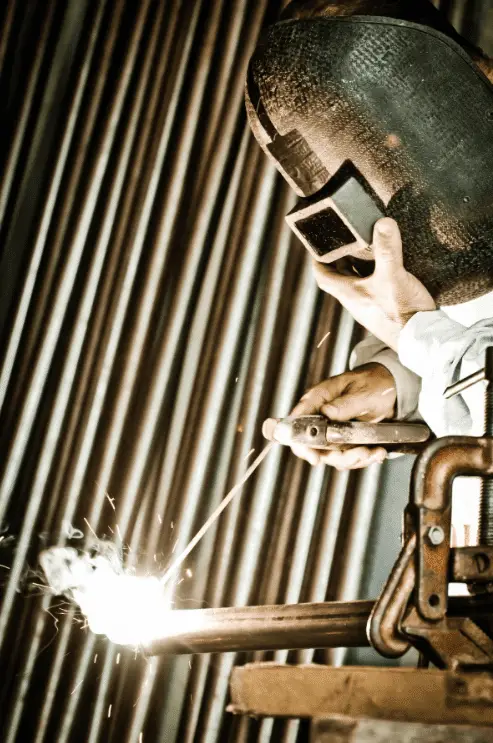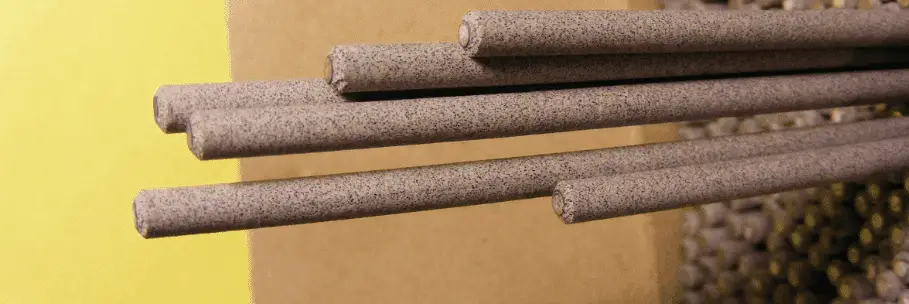Stainless steel is an excellent base material for welding because it is so resistant to rust and other forms of corrosion, and it is also extremely durable for most applications. But can you MIG weld stainless steel? The answer is a resounding “yes!” MIG welding is a great process to use on stainless steel, partly because it produces strong welds and also because it is a good beginner-level method for novice welders. So, if you already have one of the top of the line MIG welders, you’re ready to start welding stainless steel!
How do you go about MIG welding stainless steel? That’s where we come in: we’ll walk you through all of the vital information you need to know to produce strong, attractive welds on stainless steel with your MIG welder.
Procedures for MIG Welding Stainless Steel

The first step in any welding process is, of course, observing proper safety procedures. This includes wearing necessary safety items like a welding helmet, gloves, respirators, and fire-resistant clothing. It’s also important that you have a tidy, well-maintained work environment with proper ventilation. Also, be sure to adhere to any safety guidelines provided with your particular welding equipment.
Once you’ve ensured that you have taken all the necessary safety measures listed above, you’re ready to start the MIG welding process.
While MIG welding in general is a fairly easy welding process to master, especially for novice welders, MIG welding stainless steel can be a bit more involved than welding other base metals. The main thing to keep in mind is to not use too much heat, as this can affect the corrosion resistant properties of your stainless steel (more on this later).
MIG Welding Stainless Steel Basics
Before you begin welding, of course, you need to properly cut and prepare your base metal components with a hand grinder. This will ensure that your base metals are in the proper state to take on any kind of weld.
It’s also a good idea to use a basic tack weld on your base metal components first, before you go on to produce a full weld. This will allow you to make any adjustments necessary to ensure proper fitting of your components before you make the permanent weld. If you skip this step, you will lose this opportunity to make adjustments, which could potentially bite you in the end. So, be sure to take this step seriously to avoid some major headaches later on.
MIG Settings for Stainless Steel Welding

There isn’t much you need to do with your machine to MIG weld stainless steel. And any solid MIG welder worth its salt is going to come with a chart in the instruction manual or on the machine’s door that will provide you with the recommended settings for you particular MIG welder. That said, if you don’t have such a chart at your disposal, check this one out as a guide to your MIG settings for welding stainless steel. This chart will give you the information you need depending on your stainless steel MIG wire size and the metal transfer method you choose to use.
As you might expect, the thicker the wire size you use, the higher the welding current you will need and the slower the wire feed speed necessary. This is true for both short circuit transfer as well as for spray transfer using the MIG process.
Mode of Metal Transfer
When it comes to how to MIG weld stainless steel, you have essentially three options for metal transfer: spray-arc transfer, short-circuiting transfer, globular metal transfer, and pulsed-arc transfer. In this guide, we’ll focus our attention on the first three. Some, as we’ll point out, are more difficult modes to use than others. We’ll go over each one in some detail to give you a better idea of when to use each of these modes so you can make the best decision for your particular needs.
Spray Transfer

In using the spray transfer mode, you apply a higher voltage and do not allow the electrode to come into any contact with the metal. As you might expect from the name, the wire spews out a mist that transfers to the metal. Despite the name, though, there should be a clean arc and there won’t be much—if any—spatter. There are actually two kinds of spray transfer:
True Spray Transfer: With its characteristic hissing sound, true spray transfer produces zero spatter. It should only be used for flat and horizontal welding positions. It’s a good option for stainless steel, especially when you want a nice, clean weld.
Spray Transfer for Thicker Base Metals: While true spray transfer hisses, this spray transfer is known to crackle. You will never bring the electrode into contact with the metal.
Short-Circuit Transfer
The short-circuiting transfer mode is best when you are using a low voltage in MIG welding. Essentially, the wire comes into contact with the base metal component and, you guessed it, short circuits. The short-circuiting causes the wire to melt into a joint that creates a weld puddle. From there, the process repeats. The characteristic sound of short circuit transfer is akin to a high-pitched sizzle, not unlike raw meat hitting a hot grill.
When using this mode of metal transfer for MIG welding stainless steel, be sure to use 120 or 230 V input power, especially when welding thing gauge stainless steel.
Globular Metal Transfer
While globular metal transfer is, in many ways, similar to short-circuiting transfer, there are some key differences. Essentially, globular metal transfer involves creating a “glob” hanging off the wire which then drops onto the base metal to fill the joint. It is known for its slower “popping” sound. This might be a more difficult mode of metal transfer for beginners just learning how to MIG weld stainless steel, so if you’re a novice, you might want to use one of the other metal transfer modes mentioned previously.
Choosing the Right Gases and Electrodes for MIG Welding Stainless Steel

It is, of course, crucial to select the proper gas and electrodes when you are planning on MIG welding stainless steel. There are several options to choose from; however, we’ve found that the most effective and most frequently used gas for MIG welding stainless is C2—that is, 89% Argon and 2% Carbon Dioxide. Ideally, you would use a tri-mix blend of 90% Argon, 7.5% Helium, and 2.5% Oxygen, but work with what you have available to you. You could also potentially get by with 98% Argon and 2% Oxygen.
As for the electrodes you should use, we highly recommend ER308L. This electrode material is similar to 308; however it includes an average of .02% Carbon. This will result in a weld that is resistant to inter-granular corrosion. Just a useful fact: the “L” designation for electrode material simply indicates that the carbon level of the given consumable falls within the lower range of Carbon content. You could also use 309 wire, which is a good all-around wire.
Welding Rods for Stainless Steel
If you are using a stainless welding rod, you’ll want to use, as mentioned above 309L (or, ER309LSi). Just make sure the welding rod you use has an “L” in its number at the end. This, as previously stated, just means that it contains a low Carbon level. Just be sure to check your filler metal against the base metals you are using to ensure that these components will weld together properly. There are plenty of resources, including our own site, that can help you determine if you are using the proper filler metals for your stainless steel base metal components.
Potential Issues & Problems
One potential problem you might run into when you MIG weld stainless steel is using too much heat. If you get it too hot, the heat affected zones along the weld on your base metal can create a chemical reaction resulting in chrome carbide, which is not corrosion resistant. In fact, the higher alloy levels that create the greater corrosion resistance are exactly what makes stainless steel a bit more difficult to weld.

You also want to ensure you use the right shielding gas, the right grade of wire, and use a bit higher amperage than you would with milder steels.
It’s also important to ensure that your base metal components are perfectly level on your welding table. If you are working with pieces that don’t fit on your table, you’ll need to use additional supports and check that your components are perfectly level before you begin welding.
Another important factor to keep in mind is that, when welding with stainless steel, it is crucial that you maintain consistent contact tip to work distance than you would need with other metals. This is important for stainless steel because, if you were to vary your CTWD too greatly, you could create too much variance in current levels.
FAQs
1. What are the problems in MIG welding?
Numerous issues during the MIG welding process can result in excessive spatter, including the following:
- Inadequate shielding gas.
- Contaminated or rusted base materials, weld wire.
- Excessive voltage or travel speeds.
- Excessive wire protrusion.
2. Can I use the same gas for MIG and TIG?
You cannot use the same gas because TIG welding requires inert gas to ensure a clean finish and no oxidation, whereas using an inert gas exclusively for MIG welding may compromise the finished weld's appearance.
3. Can you MIG weld aluminum without gas?
MIG or TIG welding uses inert gas to create an oxygen-free environment around the aluminum material, which aids in achieving a clean weld. But is it possible to weld aluminum without using gas? Yes, aluminum can be welded in a vacuum chamber without using gas.
4. Do MIG welders wear out?
While many MIG guns are rugged and capable of withstanding daily use, they can still sustain damage; sometimes without you even realizing it. Therefore, it is a good practice to perform routine maintenance on your welding equipment and inspect it thoroughly before you begin work for the day.
5. What causes holes in MIG welding?
One of the most frequent reasons for welding pinholes is that your cylinder is nearing the end of its gas supply. This results in an unsteady gas flow to the arc and the formation of pinholes. In addition, when there is a high level of moisture in the air, water molecules can become trapped in the weld, resulting in pinholes.

